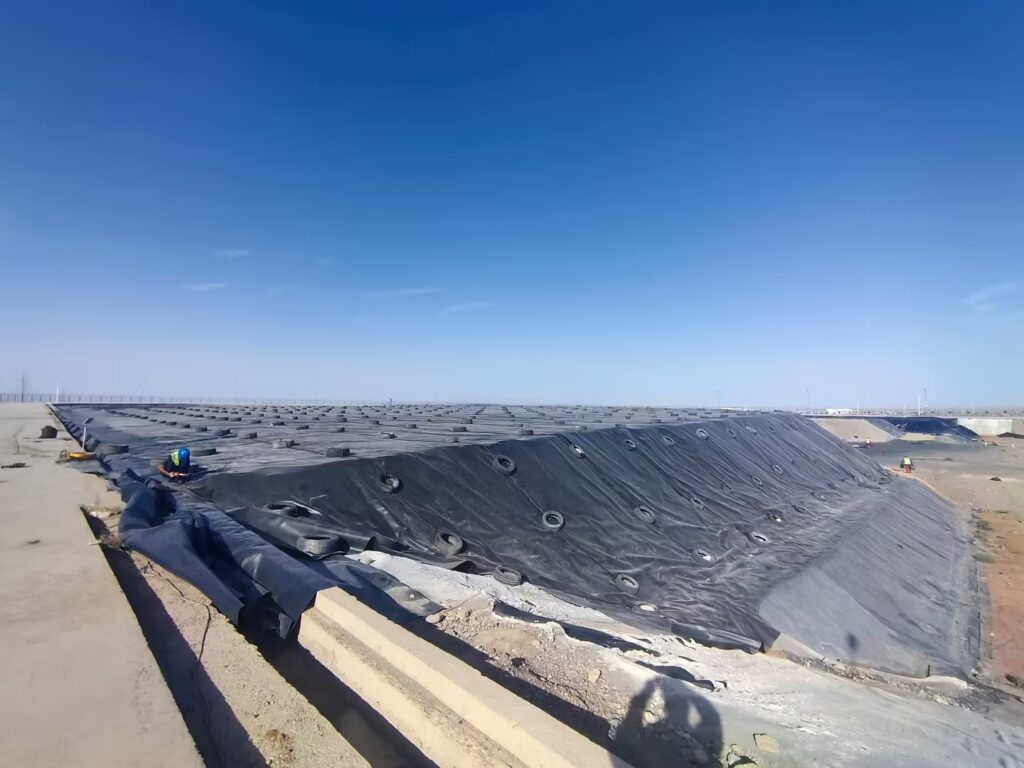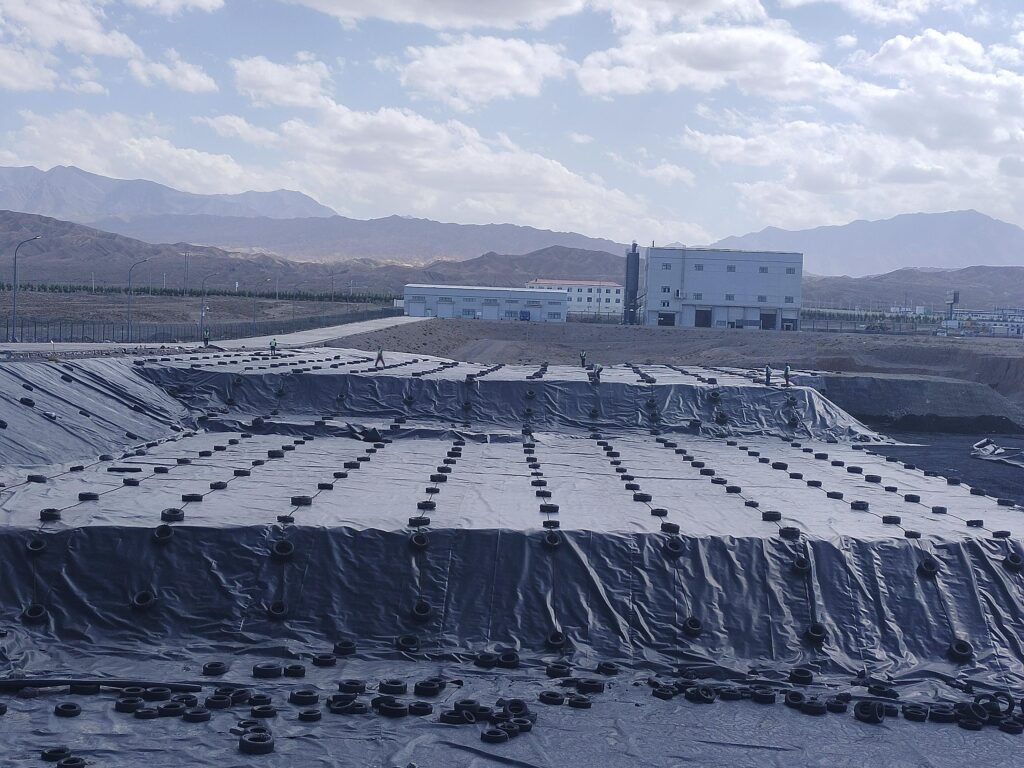Do lakes need geomembranes?
In the process of constructing or restoring lakes, geomembranes can often be used as an anti-seepage layer or water isolation layer. However, the need for geomembranes in lakes needs to be assessed on a case-by-case basis.
Here are some situations where geomembranes may be considered for lake projects:
Prevent water infiltration and loss: If the geological conditions of the lake cause large water infiltration problems, or the lake water level changes frequently, using a geomembrane can prevent water infiltration and reduce water loss.
Pollution prevention and control: If the environment where the lake is located has high requirements for water quality, the geomembrane can be used as a barrier to prevent pollutants from penetrating into the lake through the soil, thereby protecting the water quality.
Lakeshore restoration and artificial lake construction: During lakeshore restoration or artificial lake construction, geomembranes can be used to form an anti-seepage layer at the bottom of the lake to prevent water from seeping through the lake bottom, thereby maintaining the water level and water quality of the lake.
Flood adjustment and water resource management: For projects that require lake water level adjustment or water resource management, geomembranes can be used to control water infiltration and water level changes, providing better water resource control and management.
However, whether to use geomembrane in lakes requires comprehensive consideration of other factors, such as the geological conditions of the lake, ecological environment, project budget, project goals, etc.
During the design and decision-making process, relevant water resources engineers or environmental experts will generally conduct assessment and planning to ensure optimal water resources management and environmental protection measures.

How to construct lake geomembrane?
Lake geomembrane construction is a complex process that requires professional technology and experience. The following are the general steps for lake geomembrane construction:
Scheme design and preparation: Carry out scheme design and engineering planning based on the specific conditions of the lake and project needs. Determine the material, thickness, construction method and auxiliary materials of the geomembrane, and conduct on-site survey and marking.
Soil preparation and grading: Clear lake areas of debris, vegetation and other obstructions. Make sure the soil on the bottom or shore area of the lake is flat, clean, and even.
Geomembrane laying: Start laying geomembrane. Unroll and cut the geomembrane according to design requirements. When laying, take care to avoid wrinkles, stretching, and breakage. Mechanical equipment, manual force, or auxiliary tools such as inflatable rollers can be used to assist in the laying and fixing of geomembranes.
Seam treatment: For large-area geomembranes, seam treatment is usually required. Seam treatment can use methods such as hot melt welding, chemical adhesives or mechanical connections. Make sure seams are tight, leak-free and meet design requirements.
Fixation and protection: After the laying is completed, the geomembrane needs to be fixed and protected to ensure its stability and durability during use. This can include using weights or stakes to secure edges while applying surface coverings or protective layers.
Inspection and testing: After completion of geomembrane construction, inspection and testing are performed to verify its anti-seepage performance and quality. Penetration tests, water leakage detection or quality spot checks can be carried out to ensure that the quality of the geomembrane meets relevant standards and requirements.

Which geomembrane should be chosen for lakes?
Selection of the type of lake geomembrane should be carefully evaluated based on factors such as specific project needs, geological conditions, and project budget. Here are some common lake geomembrane types for your reference:
High-density polyethylene (HDPE) geomembrane: HDPE geomembrane has excellent chemical stability, strength and durability, and is often used as an anti-seepage layer in lakes. It has good corrosion resistance, can effectively isolate water and soil, and prevent water penetration and water loss.
Linear low-density polyethylene (LLDPE) geomembrane: LLDPE geomembrane is similar to HDPE geomembrane, but has better tear resistance and higher flexibility. This makes LLDPE geomembrane suitable for some lake projects that require higher stretchability and tear resistance.
Polypropylene (PP) geomembrane: PP geomembrane has good mechanical strength and UV resistance. It is suitable for anti-seepage layer and soil protection in lake projects, and can effectively prevent water penetration and soil erosion.
Polyvinyl chloride (PVC) geomembrane: PVC geomembrane has good chemical stability and anti-seepage properties and is often used in lake anti-seepage projects. It has good UV resistance and chemical resistance.
Barrier geomembrane: Barrier geomembranes generally use multi-layer composite membranes or add special barrier layers to improve the isolation and anti-seepage properties of the geomembrane. This type of geomembrane is suitable for situations where high water quality requirements are required in lake projects.
When choosing a geomembrane, you should also consider the special needs of lake projects, such as UV resistance, chemical resistance, water quality requirements, etc. At the same time, it is recommended to consult a professional engineer or consulting company to select the most suitable geomembrane material based on specific project requirements and local regulations and standards.

